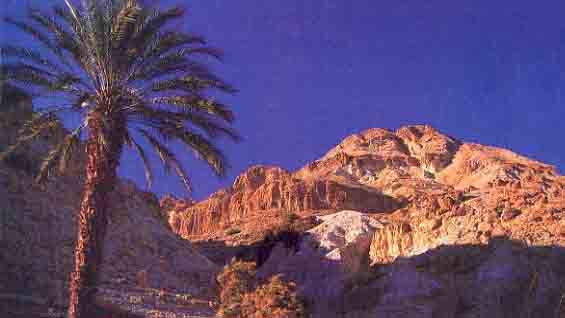Image Details

Richard Nowitz
“[With] only palm-trees for company,” writes the Roman historian Pliny (23–79 C.E.), the Essenes lived at a settlement “below” which was the town of Ein Gedi (Natural History 5.73). Ein Gedi lies about 20 miles south of Qumran. Following the conclusion of Roland de Vaux, who excavated Qumran in the 1950s, many scholars have identified the site as the home of the Essenes, based on Pliny’s identification of Ein Gedi as “below” it. But Pliny never used “below” to mean south, as moderns might: When Pliny meant “south,” he used “south.” When he used “below,” he meant “at a lower altitude.” His description would locate an Essene settlement high on the cliffs above Ein Gedi.
Here, a fresh water spring encourages the growth of semitropical vegetation. Pliny notes that Ein Gedi was “second only to Jerusalem in the fertility of its land and in its groves of palm-trees” (Natural History 5.73). And in Ecclesiasticus 24:12, 14, Lady Wisdom praises herself: “I took root among the people whom the Lord had honoured, [and] … I grew like a date-palm at Ein Gedi.” These trees still thrive at Ein Gedi today, but none would have survived the arid climate of Qumran.
